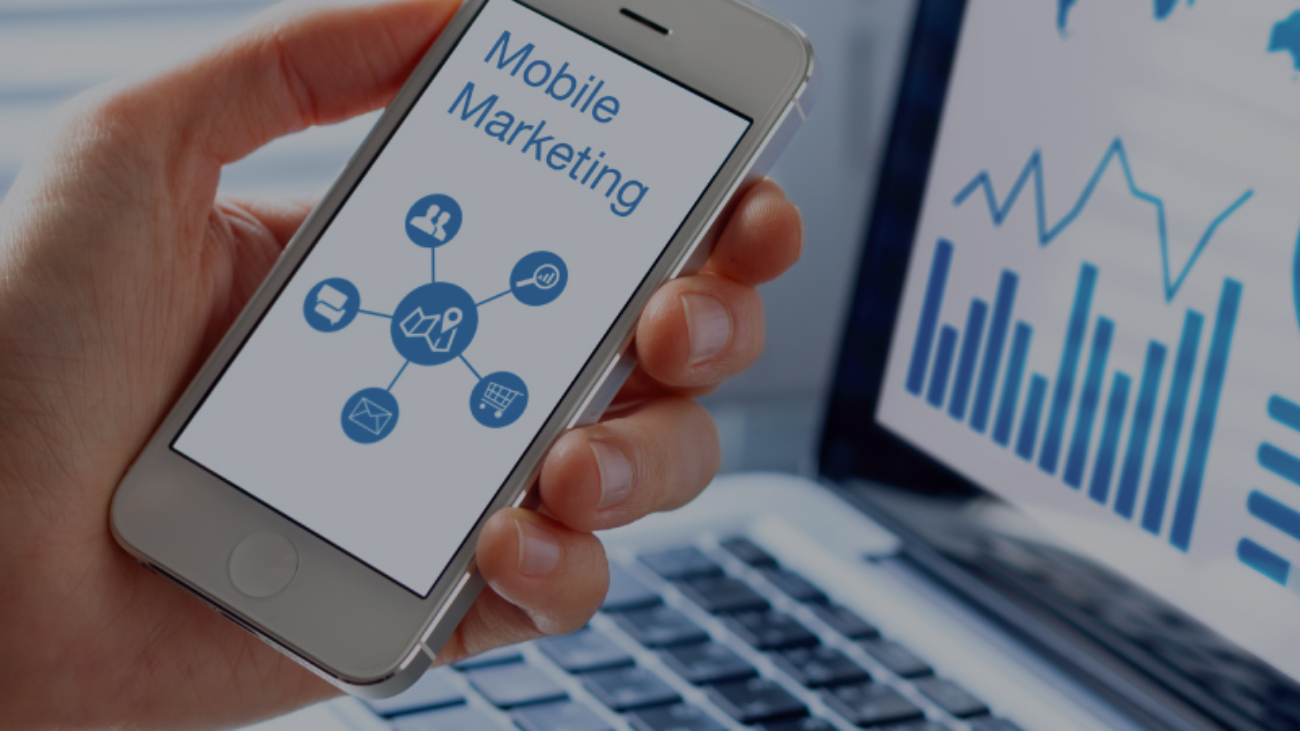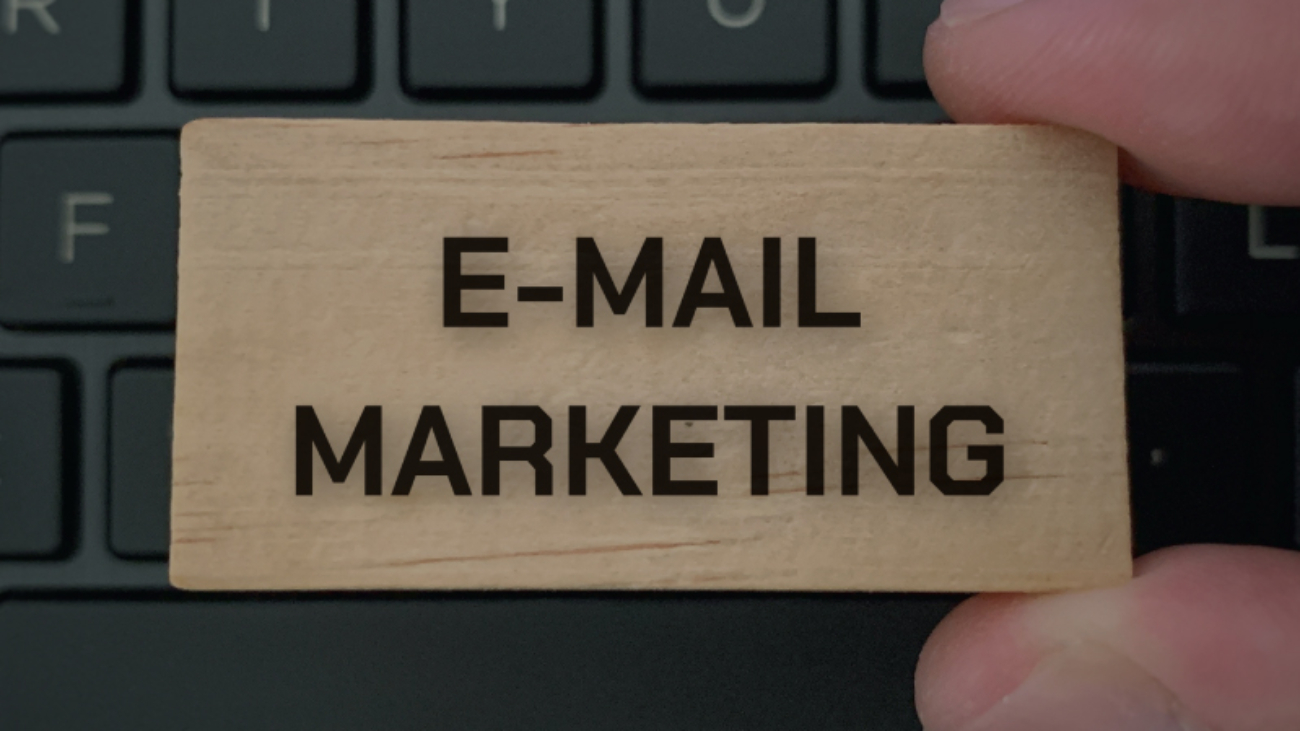The core of this guide is the in-depth examination of generative AI and its practical applications in B2B marketing. It explores how generative AI, a subset of artificial intelligence, can be harnessed to create value throughout the marketing funnel. Case studies and real-world examples showcase how generative AI can automate content creation, personalize messaging, and enhance customer segmentation, ultimately driving lead generation and conversion.
Introduction to Sustainability and CSR in B2B Marketing
CSR is a business model that allows companies to hold themselves accountable to their stakeholders, the public, and themselves.
CSR is also known as corporate citizenship, companies can be mindful of their impact on society’s economic, social, and environmental aspects.
Many people consider sustainability to be a significant factor when making purchasing decisions.
As a result, companies often promote their corporate social responsibility (CSR) in their marketing efforts.
This approach has been successful in the B2C industry. It is now becoming more prevalent in the B2B sector as a means of building customer loyalty.
CSR aids in highlighting a company’s commitment to social and/or environmental causes.
Companies can demonstrate CSR in a variety of ways, depending on their industry and company. CSR activities benefit society and the environment instead of harming them.
Large corporations can implement CSR programs as they have expanded their business to the extent where they can contribute to society.
And setting standards of ethical behavior for their peers, competition, and the industry. Successful and prominent corporations carry greater responsibility towards the community and society.
The Basics of Corporate Social Responsibility (CSR) in B2B Marketing
B2B marketing focuses on the company’s purpose and involves promoting its values and mission alongside its products or services.
B2B businesses should align their marketing efforts with their purpose. This can foster a stronger connection with their target audience and create a more significant brand experience.
It’s essential to prioritize corporate social responsibility, and here are five reasons why:
- Build trust with your audience
- Attract and retain top talent
- Stand out from your competitors
- Stay ahead of government regulations
- It’s just the right thing to do
90% of the biggest companies in the world that have incorporated ESG programs into their business have made advancements.
This is because clients prefer to collaborate with corporations that are environmentally conscious, care for their workers, and support their communities.
Why Sustainability Matters in the B2B Sector
There are numerous opportunities for companies to engage in sustainable marketing practices.
Achieve this through the promotion of resource-saving products and services. Ecologically focused supply chains or donations to climate-neutral or social initiatives are essential in the B2B sector.
By adopting the motto – Do green things and promote it, businesses can enhance their B2B marketing efforts.
Effective arguments for communicating through sustainable marketing include the potential for lower costs and increased productivity.
Pointer:
- Reduce the use of energy and resources.
- Increase in effectiveness of technical systems.
- Decrease in the incentive or tax for CO2 certificates.
In general, it’s best to focus on improving costs, time, performance, and innovation. Industrial companies tend to prioritize improvement when they can see positive results.
Many consumers, particularly millennials, are increasingly cautious while spending their money. This generation is more invested in keeping the ecological balance than the previous generation.
However, when they do make purchases, there is a growing trend in favour of sustainable brands. These consumers prefer to support brands that promote pro-social values, use sustainable manufacturing methods, and adhere to ethical business practices.
You can reduce your business’ impact on the environment in many ways. For example, you can:
- Optimize your product life cycle
- Buy locally to save fuel costs
- Use products which is reusable
- Create an efficient (and fuel-efficient) distribution network
- Work with environmentally conscious suppliers and distributors
- Reduce packaging
- Source responsibly (e.g. using recycled materials and sustainable timber)
The Link Between Sustainability and Brand Reputation
All businesses are constantly in the public eye because of the rise in consumer awareness of environmental issues. Let’s dig deep into how sustainability and brand reputation have a connection.
Today more than 90% of CEOs recognize sustainability as crucial for their brand reputation. As a result, companies are giving importance to CSR programs for a better environment and well-being of the society.
The key realization for brands is that being eco-friendly encompasses social aspects, each crucial for a comprehensive sustainability strategy.
Consumers are turning towards sustainable brands to buy products and services. However, if you fail to communicate effectively with your consumers and showcase your brand’s initiatives, consumers may go with your competitors.
Therefore, paying attention to the messages you send out in press releases and on social media is crucial. The overall brand image you convey, to demonstrate to consumers what your brand represents.
Conclusion
CSR projects aim to make the world a better place and leave a clean and green environment behind. By directly benefiting the environment, the people, and the surroundings for a better future for the upcoming generation.
Moreover, the projects may have positive effects on a company’s internal operations. Employee satisfaction and staff retention will be enhanced knowing that their employer is giving back to Mother Nature.
People are choosing to work with companies that are attempting to be more conscious of the natural resources available.
The stakeholders and the consumers will come forward and support your cause. It will lead to an increase in the productivity and sales of the organization.
The Power of Employer Branding in B2B Marketing
In today’s world, where social media and online platforms are prevalent, clients and potential employees have access to a wealth of information about your company’s internal workings. For B2B tech companies, creating a positive employer brand is crucial for attracting new clients. Just showcasing casual office events is no longer adequate.
It’s not just about showcasing products and services; it’s about crafting a compelling narrative that attracts clients and talented individuals to join your team. This simple yet profound strategy can shape the very core of your business success.
Understanding Employer Branding in B2B Marketing
Think of your business as a place where people don’t just work; they thrive. Employer branding strategy establishes your company as an appealing and sought-after workplace.
It’s like painting a vivid picture of your organization’s culture, values, and opportunities. While B2B marketing typically focuses on attracting clients, employer branding extends that focus to attract top-notch talent.
Why Does Employer Branding Matter in B2B?
-
Attracting Talent
A strong employer brand is a magnetic force, pulling in skilled individuals who align with your company’s values. These individuals don’t just bring expertise; they get a shared commitment to your business’s success. Thus, employer branding is a feature that attracts excellent talents to the brand.
-
Cultivating Relationships
The B2B landscape thrives on partnerships and collaborations. When other businesses perceive your company as a great workplace, they’re more likely to see you as a trustworthy and reliable partner.
-
Enhancing Reputation
A positive employer brand elevates your overall reputation. As word spreads about the positive work environment and opportunities your company offers, your credibility and stature in the market increase.
Building an Effective Employer Brand in B2B Marketing
-
Define Your Identity
Begin by clearly defining your company’s values, mission, and culture. These pillars are the foundation of your employer brand. A company with no values and principles to showcase will starve to get talented employees and quality clients.
-
Showcase Employee Stories
Spotlight the stories of your employees. Let them share their experiences, challenges, and growth within the company. Authentic narratives resonate deeply with potential talent.
-
Create Engaging Content
Craft content that provides an inside look into your organization. Use videos, blogs, and social media to highlight company events, employee achievements, and day-to-day life at your workplace.
-
Leverage Social Media
Platforms like LinkedIn are gold mines for employer branding. Regularly post about company achievements, employee milestones, and workplace initiatives to attract talent’s attention. This will help build the brand’s reputation and eventually become known.
-
Engage with Potential Talent
Respond promptly to inquiries from potential candidates. How you engage with them gives them a glimpse into your company’s responsiveness and culture.
Benefits Beyond Talent Attraction
While attracting top talent is a pivotal outcome of employer branding, its impact extends beyond recruitment. It can even boost the overall operations and functions of the company.
-
Employee Retention
When your company’s values and culture align with employee expectations, job satisfaction increases, leading to higher retention rates.
-
Higher Productivity
A positive work environment breeds motivation and enthusiasm. Employees are more likely to invest their energy when they feel valued and engaged.
-
Client Trust
Businesses that see your employees as enthusiastic and committed are more likely to trust your offerings and collaborations.
Summing Up
Employer branding isn’t just a side note; it’s a key player in B2B marketing. By showcasing your company as a remarkable workplace, you’re attracting top talent, building stronger relationships, and enhancing your reputation.
Companies must remember that every connection matters in the business world, and a powerful employer brand can unlock doors to success you never imagined.
Contact Ondot Media, a B2B lead generation partner, if you want brand-building and lead generation assistance.
Reasons to Include Account-Based Marketing in B2B Marketing Strategy
In the ever-evolving landscape of B2B marketing, Account-Based Marketing (ABM) has been gaining remarkable traction. This personalized and targeted strategy is a game-changer for businesses looking forward to build stronger customer relationships and drive growth.
ABM is a one-to-one approach. Typically, enterprises with more than 1000 employees use this marketing approach. ABM helps the team in these enterprises to:
- Engage earlier in the process of sales and with higher value opportunities.
- Align strategic marketing initiatives with sales and account management strategies.
- Maximize marketing campaigns’ value and return on investment (ROI).
Implementing Account-Based Marketing in B2B Marketing Strategy benefits B2B companies. Let’s consider why including Account-Based Marketing in the B2B marketing strategy can be brilliant.
Precision Targeting
Unlike traditional mass marketing, ABM focuses on a select group of high-value accounts. By honing in on specific companies that align with your ideal customer profile, you can allocate resources more effectively and avoid wasting efforts on disinterested leads. This makes marketers save time and money from spending on futile efforts.
Personalized Approach
ABM personalization allows you to tailor your messaging and content to individual accounts. This personal touch creates a deeper connection and resonates better with decision-makers, increasing the likelihood of engagement and conversion.
Stronger Customer Relationships
When you invest time in understanding each account’s unique challenges and needs, you show genuine interest. This develops trust and lays the foundation for lasting partnerships beyond one-off transactions.
Aligning Sales and Marketing
Another Account Based Marketing benefit is that it promotes collaboration between sales and marketing teams. Both teams work together to create targeted campaigns that address specific account needs, resulting in a unified and consistent customer experience.
Increased ROI
With a focused approach, your marketing efforts yield higher returns. Since ABM targets high-potential accounts, the conversion rates are often higher, leading to better ROI on your marketing investments.
Efficient Resource Allocation
Instead of casting a wide net, Account Based Marketing benefits allow you to allocate resources strategically. You invest where it matters most, optimizing your time, budget, and energy for the accounts with the greatest potential.
Shorter Sales Cycles
Personalized messaging and focused campaigns help move leads through the sales funnel faster. The relevance of your offerings and the relationship you’ve built can expedite the decision-making process. This also makes marketers save time and focus on more prospects.
Enhanced Data Utilization
This is one of the most sorted Account Based Marketing benefits. ABM relies on deep insights into your target accounts. This data-driven approach makes you have informed decisions, refine strategies, and continuously improve your campaigns.
Tailored Content Creation
Creating content that addresses particular pain points and interests of target accounts enhances engagement. Personalized content resonates more effectively, whether it’s articles, webinars, or case studies.
ABM requires tailored content as it is personalized content. It makes the prospects feel more trust in the brands.
Market Expansion
ABM is for more than just your existing customer base. It can also help you tap into new markets and industries by identifying and targeting potential clients who fit your ideal customer profile.
Summing Up
Account-Based Marketing offers a powerful approach to B2B marketing that centers on personalization, precision, and building solid relationships. By focusing on a particular group of high-value accounts and tailoring your strategies accordingly, you can drive growth, maximize ROI, and foster enduring customer connections.
In today’s competitive B2B landscape, embracing ABM best practices could be the key to unlocking your business’s potential.
Contact OnDot Media, a trusted B2B Account Based Marketing partner, if your company needs ABM assistance.
How Can B2B Video Marketing Benefit Companies
Video marketing for B2B companies generates leads uniquely. Video marketing is a fantastic way for businesses to reach out to other companies and make their products or services look fantastic.
Due to this fact, B2B companies do bother with video marketing. Businesses know in the age of YouTube and TikTok, videos are the perfect thing to get into prospects’ minds with strong elements of brand messaging. Videos catch the attention, tell a story, and make people want to know more. And that’s precisely what they do for businesses. Thus, the importance of video marketing is paramount in B2B digital marketing process.
When a company makes a video about its products or services, it can showcase everything they have to offer engagingly. They can explain how their products work, show them in action and even tell stories about how they helped other businesses. Prospects will be able to watch it as a movie. This is one of the main benefits of B2B Video Marketing for businesses.
Benefits of video marketing for B2B companies.
Grabs Attention
Imagine someone is scrolling through the feed, and suddenly, they see an eye-catching video. They can’t help but click on it. That’s precisely what B2B video marketing does for companies. It grabs the attention of other businesses, making them curious about what the company has to offer.
Builds Trust
Watching a video can be like meeting someone face-to-face. It creates a connection and builds trust. Companies can use videos to introduce their team members, share success stories, or even provide testimonials from happy customers. This builds confidence in their brand and shows they are legit and reliable.
Explains Complex matters
Sometimes, businesses have excellent technical products that could be clearer to explain in words. But with video, they can break down those complex ideas into easy-to-understand visuals. This video marketing strategy will work magically for businesses.
Boosts SEO
B2B videos can help companies show up higher in search results. When businesses share videos on their website or social media, it increases the time people spend on their site, which search engines love. So, companies get hype and rank higher on Google.
Viral on Social Media
Businesses know how videos go viral on social media. Most companies want that. When a B2B video engages, other businesses and people share it with their friends, and it becomes viral. This means more exposure and potential customers.
Saves Time
Business professionals are busy. So, when they want to learn about a product or service, they need more time to read long boring articles. They can watch a short, sweet video covering everything they need to know. It’s quick and easy.
Influences Decision-making
When a company sees another company doing amazing things in a video, it inspires them to make the right decision. They may think that if it worked for them, it would work for us too. It’s like having a positive influence on others.
Measures Success
B2B video marketing is about more than just making excellent videos. Companies can track how many people watch their videos, where they stop watching, and if they take any action after watching. This helps businesses know what’s working and what needs improvement.
Summing Up
B2B video marketing is a weapon for companies to generate leads, build trust, and show off their unique products and services. It’s a win-win for them. Thus businesses can try more video marketing for B2B as part of their digital marketing plan.
Contact Ondot Media, a B2B lead generation partner, if your company needs assistance.
How Can Mobile Apps Help in B2B Lead Generation
Today, running a business without a mobile app and mobile marketing is impossible. Mobile apps have become an indispensable part of the everyday lives of people. Thus it is a proactive way to do B2B lead generation. Going with the trend is the most valuable thing in business marketing.
Let us explore the fascinating world of mobile apps and how they revolutionize B2B mobile app lead generation. These small but mighty apps are changing how businesses find potential customers and grow their ventures.
B2B Lead Generation
Before delving into the wonders of mobile apps, let’s understand what B2B lead generation is all about. B2B is business-to-business, where one business sells products or services to another. Lead generation involves finding potential customers or leads who might be interested in what your business offers.
Let us look into how mobile apps help generate business leads.
Accessibility
One of the most crucial advantages of mobile apps for B2B lead generation is their accessibility. In a world where smartphones are always at our fingertips, having a mobile app makes it incredibly easy for business professionals to connect with the company, explore the products, and potentially become a lead.
Personalized Experiences for Maximum Engagement
Imagine customers downloading a B2B app that greets them with questions about their business needs. Suddenly, they have a personalized feed filled with relevant content and offers tailored just for them. Mobile apps have the power to create personalized experiences, making it feel like you have your very own personal shopper for B2B products.
Harnessing the Power of Push Notifications
Push notifications are proactive ways of getting attention! These pop-up messages can be sent directly to user’s phones, even without using the app. Businesses can use push notifications to announce new products, share special offers, and keep users engaged, all while doling mobile app lead generation.
App Development Made Easy
Building a mobile app for business is more accessible than people might think. Many companies offer app development services; some even provide customizable templates matching the brand.
Data Collection
Mobile apps can gather valuable user behavior data, giving businesses insights into what content and features attract potential customers. This data treasure trove helps optimize the app for more effective mobile marketing.
Tips for Successful Mobile App Lead Generation
We have explored the power of mobile apps in B2B lead generation. Now let us look into some quick tips to make the most out of mobile marketing:
- Simplicity is Key: Keep the app user-friendly and easy to navigate.
- Value-Driven Content: Provide helpful tips, industry insights, or exclusive offers to keep users engaged.
- Brand Identity Matters: Ensure the app represents the business with a recognizable logo and colors.
- Engage with Users: Respond to comments, questions, and feedback to show you care about their needs.
- Stay Fresh and Relevant: Regularly update the app with new content and features to keep users returning for more.
Summing Up
Mobile apps are not just for fun and games; they are potent tools for B2B lead generation. With their accessibility, personalized experiences, and data-driven insights, mobile apps can propel business to new heights. So companies that do not have a mobile app can conquer the business world with an excellent app.
Contact OnDot Media, a trusted B2B lead generation partner, if your company needs B2B lead generation assistance.
The Future of Content Syndication Strategies for Businesses
Content syndication is like publishing your content across different platforms. It’s like sharing your blog posts, videos, or articles with a broader audience, ensuring your brand gets the spotlight it deserves.
This blog discusses the future of content syndication strategies for businesses. People’s attention spans are getting shorter by the day. So, companies need to find creative ways to reach their audience wherever they are online.
The future of content syndication is going to be beneficial for all businesses. Businesses can have proactive content syndication strategies to keep their content in the spotlight.
Futuristic approaches of Content Syndication
Personalized Content
Everyone knows that Netflix suggests shows and movies based on what people have watched before. Businesses can go with personalized content syndication as it works well. Businesses will use AI to analyze user behavior and interests to deliver tailor-made content. So, the audience will get content that’s made just for them.
Interactive Content
Content can be boring for the audience at times. And nobody has time to go through those boring content. In the future, businesses will see more interactive content like quizzes, polls, AR/VR experiences, and other game-related content. It’s all about engaging the audience and making them part of the storytelling process. So it will get rid of more passive scrolling.
Micro-Influencers Will Rule
Mega and micro-influencers will take the spotlight in the future. They are the influencers with a good number of active followers. Businesses will collaborate with them to reach niche audiences and create authentic connections.
Multi-Platform Syndication
Many platforms fight for the attention of their audience. They include TikTok, Instagram, YouTube, etc. Businesses must adapt their content style to fit each platform’s vibe. One-size-fits-all will not work anymore. Flexibility is the key.
Augmented Reality (AR) Content
AR will transform content syndication, bringing products and experiences into the homes. Imagine doing makeup virtually or seeing how that fancy couch looks in your living room. The audience will have a mind-blowing experience. Businesses must adapt it to provide an excellent customer experience and engagement.
Podcasts will Become Crucial
Podcasts are already there. But they will become even more crucial for businesses in the future. People love listening while they’re on the go, and companies will use this audio form of content to share valuable content with their audiences. This will have a significant effect on business content sharing in the future.
Eco-Friendly Content
Everyone cares about the planet. Businesses will adopt eco-friendly content strategies, focusing on sustainability and social responsibility. People will support those who care about mother earth.
User-Generated Content (UGC)
People love sharing their opinions and experiences online, and businesses know it. Thus, companies will encourage more UGC because it’s authentic and relatable and builds a strong community around their brand. It can make the posts go viral. So, businesses will focus more on it in their content syndication strategy in the future.
The future of business content syndication strategies will be more beneficial and impressive for companies. With personalized, interactive, and sustainable approaches, brands will level up their content practices and create stronger connections with the audience.
Content syndication is an excellent strategy for businesses to generate leads and eventually close many sales. Being everywhere online with engaging content is very important for business today. So, adopting these future trends of content syndication strategy is essential for businesses of all domains.
Contact OnDot Media, a trusted B2B content syndication partner, if your company needs B2B content syndication assistance.
Effective Email Marketing Techniques for B2B Business Lead Generation
Marketers always make use of the exciting world of email marketing. Email marketing techniques are effective for lead generation for B2B businesses.
Email marketing is of utmost importance in B2B marketing. When done right, B2B email marketing can effectively connect with potential clients and boost sales for B2B companies. So, let’s get into some effective techniques that can help to generate those high-quality leads through effective B2B email marketing techniques.
-
Know Your Target Audience
Marketers have to know whom they are talking to. Before you even think about sending an email, take some time to research and understand your B2B target audience. Know their pain points, needs, and what solutions they are looking for. The better you know them, the more personalized and relevant your emails will be.
-
Create Interesting and Engaging Content
No one likes boring emails. So, make your content interesting. Write engaging subject lines that grab attention, and keep your emails concise and to the point. Use compelling visuals like gifs or images to break up the text and keep things interesting. Add value to your audience by sharing helpful tips, industry insights, or exclusive offers.
-
Nail that Call-to-Action (CTA)
Magic can happen with compelling CTAs. Make sure the CTA is clear, action-oriented, and stands out. Whether it’s “Sign up for a free trial,” “Get a personalized demo,” or “Download our awesome eBook,” it should be hard to resist clicking on.
-
Segment your Email List
Do not treat everyone the same. Segment your email list based on different criteria like industry, company size, or engagement level. This way, you can send targeted emails that speak directly to each group’s specific interests and needs.
-
Mobile-Friendly Emails
Today all are glued to their phones. So, ensure your emails are mobile-friendly. Nobody has time or patience to deal with formatting or tiny font sizes requiring zooming in and out. Make it easy for prospects to read and engage with your emails on any device.
-
A/B Test
Testing is the key to improvement. Split-test different elements of your emails, like subject lines, CTA buttons, or even email designs. Keep track of what’s working and what’s not, and use that data to optimize your future email campaigns.
-
Optimize for Deliverability
Marketers want to make sure the emails land in the right inbox. Avoid spammy language and deceptive practices. Use a reliable email service provider, and regularly clean your email list to remove inactive or unengaged subscribers.
-
Follow Up
Marketers should not be afraid to follow up. Sometimes it takes a few nudges to get a response. Politely reach out to those who haven’t opened your emails or responded to your previous outreach.
-
Leverage Social Proof
People trust their peers, so use social proof to your advantage. Include testimonials, case studies, or stats that show how your B2B offering has helped other businesses. This builds trust and credibility, making your leads more likely to take action.
-
Measure, Analyze, Improve
Always keep an eye on those email metrics. Track open rates, click-through rates, conversions, and all that give an idea about the campaign’s effectiveness. Use this data to recognize what’s working well and what needs improvement. Adapt and evolve your email marketing strategies accordingly.
Summing Up
These are some top-notch B2B email marketing lead generation techniques for B2B businesses. Remember, it’s all about knowing your audience, providing value, and staying on top of your email campaigns. Implement all these B2B email lead generation techniques to increase the customer base and sales.
Contact OnDot Media, a trusted B2B lead generation partner, if your company needs B2B lead generation assistance.
Successful B2B Intent-Based Marketing: An Essential Guide
In B2B marketing, staying ahead of the competition is essential. It requires innovative approaches and a deep understanding of the target audience. One strategy that has gained significant traction is B2B Intent-Based Marketing.
Traditional marketing methods are not intent-based. Intent-based marketing identifies and targets prospects interested in the products or services. Brands can improve their likelihood of success by tailoring their marketing efforts to engage with these high-intent prospects.
This blog will discuss intent-based marketing. Moreover, it will outline practical steps to implement a successful B2B intent-based marketing strategy.
Understanding Intent-Based Marketing
The main focus of intent-based marketing is identifying buyer intent signals. It helps marketers to determine the chances of a potential customer making a purchase. These signals can be explicit. They can include specific keyword searches, content consumption patterns, or interactions with the brand.
They can also be implicit, inferred from a prospect’s behaviour and can include engagement on social media, participation in webinars, or downloading whitepapers.
Intent-based marketing identifies and prioritizes high-intent prospects. It is the main principle of intent-based marketing. Marketers can optimize their resources. Moreover, they can focus on personalized engagement and increase conversion rates.
Key Steps to Implement B2B Intent-Based Marketing
-
Data Collection and Analysis
Effective intent-based marketing begins with a robust data collection process. Use various tools and platforms to gather intent data on the prospects’ online behaviour, interests, and interactions with the brand. Analyze this data to identify patterns and signals indicating strong purchase intent.
-
Define Target Intent Signals
Establish a clear set of intent signals that align with the target audience and business goals. This could include specific keyword searches, website interactions, content downloads, or email subscriptions. Creating a comprehensive list of intent signals will help brands recognize potential high-intent prospects.
-
Segmentation and Personalization
Divide the prospects into segments based on their intent signals. Then marketers can prioritize those demonstrating the highest intent. Create personalized messages and content that cater to each segment’s unique needs and interests. Tailoring marketing efforts ensures prospects feel valued and understood. It further increases the chances of conversion.
-
Content Strategy for Intent-Based Marketing
Content plays a pivotal role in B2B intent-based marketing. Develop high-quality content that aligns with the prospect’s interests and needs. Offer valuable insights, industry-specific solutions, and actionable advice showing expertise.
-
Engage with Relevant Channels
Determine the channels where your high-intent prospects are most active. It could be social media platforms, industry forums, or specific publications. Engage with the prospects through these channels, participate in conversations, and provide valuable input. It will build a rapport and establish your brand as a trusted resource.
-
Real-time Monitoring and Adjustments
Intent-based marketing is an iterative process. Continuously monitor and analyze intent data to measure the effectiveness of the campaigns. Identify areas of improvement and make real-time adjustments. It will optimize the strategy for better results.
-
Lead Nurturing and Follow-Up
Not all high-intent prospects will convert immediately. Implement a comprehensive lead nurturing program. It will help marketers stay connected with prospects who are not ready to purchase.
Provide them with relevant content, personalized offers, and consistent follow-ups. It helps companies to keep the brand top-of-mind when they are prepared to decide.
Benefits of Intent-Based Marketing
-
Improved Conversion Rates
By focusing on prospects with demonstrated intent, the marketing efforts are more likely to yield conversions. It will also reduce wasting resources on low-potential leads.
-
Personalized Customer Experience
Understanding buyer intent enables brands to deliver tailored content and experiences that resonate with the prospects. It will further build stronger relationships and brand loyalty.
-
Better ROI and Resource Allocation
Intent-based marketing optimizes the budget by directing resources to the most promising prospects, leading to higher ROI.
-
Data-Driven Decision Making
Intent-based marketing relies on data analysis. It fosters data-driven marketing culture that allows for continuous improvement.
Summing Up
Intent-based marketing is an indispensable strategy for any B2B marketer aiming to enhance their campaigns’ efficiency and effectiveness. By identifying high-intent prospects, segmenting the audience, and providing tailored experiences, brands can drive better outcomes.
It will also help businesses to achieve a competitive edge in the dynamic B2B landscape. Embrace intent-based marketing, and watch the B2B endeavours thrive like never before.
Contact OnDot Media, a trusted B2B Intent-based Marketing partner, if your company needs Intent-based Marketing assistance.
Building Great B2B Buyer Persona for Marketing
Where do potential customers get trusted information from? What makes them make the buying decision? Getting answers to these questions makes B2B marketers strategies marketing campaigns that target the ideal customers. This would make them present with the content where the right audience will see it. Building a B2B buyer persona is the way to do it.
It is vital to understand the customers beyond their demographics. It is helpful to maximize the reach of the content and its views by the right audience.
The B2B buyer persona or customer persona is a semi-fictional customer description. It includes customers’ behavior, demographics, lifestyle, challenges, and motivations. In a B2B context, buyer personas represent the buyers who make buying decisions for their respective companies.
In B2B marketing, knowing the target audience is crucial. By creating a detailed B2B buyer persona, businesses can customize their marketing strategies to address the specific needs of the ideal customers. This blog post will guide marketers through the simple steps of building a compelling B2B buyer persona, helping to connect better with the audience.
Steps to Build B2B Buyer Persona
-
Research the Market
Research the industry to understand the trends, challenges, and opportunities. Identify the target audience and gather data like company size, industry type, job titles, problems they face, and how they make purchasing decisions. Use surveys, interviews, and reports to collect this information.
-
Analyze the Current Customers
Look at the data you already have about your existing customers. Find common patterns like demographics, behaviors, and preferences. Figure out what makes the best customers choose their products or services. This will form a strong foundation for building buyer personas that resonate with the target audience.
-
Talk to Customers
Engage with current customers, potential customers, and industry experts. Conduct interviews and surveys to get their thoughts and insights. Ask open-ended questions to understand their experiences, challenges, and goals. This information will help to create accurate and detailed buyer personas.
-
Identify Common Characteristics
Group people with similar job roles, responsibilities, challenges, and goals based on your collected data. Look for patterns that will help you create specific buyer personas representing different customer profiles. For example, brands might have personas like “Marketing Manager Mary” or “IT Director David.”
-
Create Detailed Personas
Give each persona a name, job title, and background information. Describe their goals, challenges, preferred communication channels, and what influences their decisions. Include personal details like hobbies or interests to make the user persona relatable. The more detailed and realistic the personas are, the better you can customize the marketing efforts.
-
Validate and Improve
Share the customer persona with the sales, marketing, and product development teams for feedback. To ensure accuracy, consider conducting focus groups or follow-up interviews with a small target audience sample. Use the feedback to refine and enhance the buyer personas.
-
Use Buyer Personas in Your Marketing
Align the marketing strategy with the needs of each B2B buyer persona. Develop targeted messages, content, and campaigns that address their challenges and aspirations directly. Choose the proper communication channels to reach each persona effectively. By personalizing marketing efforts, brands can engage customers and increase their chances of success.
Summing up
Building a great B2B buyer persona is vital in developing effective marketing strategies that resonate with the target audience. Marketers can create highly tailored and compelling campaigns that drive engagement and generate valuable leads by investing time and effort into understanding the customers, their pain points, and their aspirations. Regularly update and refine the buyer personas as the market evolves to ensure ongoing success in your B2B endeavors.










